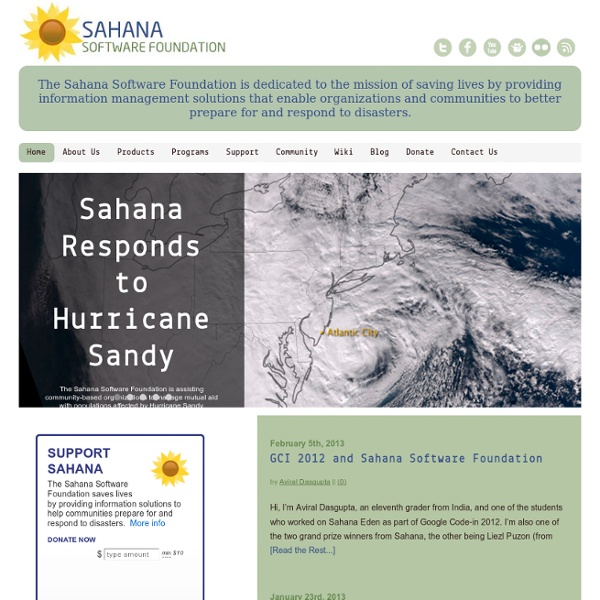



Humanitarian OSM Team The mapkibera project (mapkibera.org) is training local people of Kibera, Nairobi to create and own their map with OpenStreetMap OpenStreetMap being used by search & rescue teams after the Haiti earthquake. The community responded rapidly creating the best map resources available. Our maps continue to be used for redevelopment planning, and HOT people are currently on-the-ground in Haiti giving training in use and improvement of the data From the beginning of OpenStreetMap the benefit of open data for humanitarian aid and economic development was anticipated. HOT Mission and Objectives Mission Statement The Humanitarian OpenStreetMap Team (HOT) applies the principles of open source and open data sharing towards humanitarian response and economic development. Core Objectives Advocacy, Training and Outreach Thinking and Design Governance Global Volunteer Community There are many ways to contribute to the mission of HOT, see the HOT Guide for the basics. Voting Member Community Incorporation Posters
Ddrescue [ English | Español | Français | Italiano ] Introduction GNU ddrescue is a data recovery tool. It copies data from one file or block device (hard disc, cdrom, etc) to another, trying to rescue the good parts first in case of read errors. Ddrescuelog is a tool that manipulates ddrescue mapfiles, shows mapfile contents, converts mapfiles to/from other formats, compares mapfiles, tests rescue status, and can delete a mapfile if the rescue is done. Ddrescuelog operations can be restricted to one or several parts of the mapfile if the domain setting options are used. The basic operation of ddrescue is fully automatic. If you use the mapfile feature of ddrescue, the data is rescued very efficiently, (only the needed blocks are read). Ddrescue does not write zeros to the output when it finds bad sectors in the input, and does not truncate the output file if not asked to. Recordable CD and DVD media keep their data only for a finite time (typically for some years). Documentation Download How to Help
in brief Copernicus is a European system for monitoring the Earth. Copernicus consists of a complex set of systems which collect data from multiple sources: earth observation satellites and in situ sensors such as ground stations, airborne and sea-borne sensors. It processes these data and provides users with reliable and up-to-date information through a set of services related to environmental and security issues... The services address six thematic areas: land, marine, atmosphere, climate change, emergency management and security. They support a wide range of applications, including environment protection, management of urban areas, regional and local planning, agriculture, forestry, fisheries, health, transport, climate change, sustainable development, civil protection and tourism. The Copernicus programme is coordinated and managed by the European Commission.
Save and Restore Desktop Icon Layout in Windows Vista If you switch resolutions a lot you’ve probably experienced the problem with Windows moving your icons around every time it switches to a lower resolution, such as when playing a video game or hooking up your laptop to an external display. With a little tweak that originally came from the resource kit, we can add a menu that will let us save and restore the desktop icon positions by right-clicking on the Computer item on the start menu (or desktop icon). Install Download and extract the zip file, and then copy Layout.dll into your C:\Windows\System32\ directory, assuming you’ve installed Vista on your C: drive. Next, you’ll need to double-click on the Layout.reg file, which will add the contents to the registry. Now when you right-click on the Computer entry in the start menu, you’ll see two new items for “Save Desktop Icon Layout” and “Restore Desktop Icon Layout”. To prove that it works, move your icons around and jumble them up… Extremely handy! Download Install Installer for 64-bit Windows
Vesuvius Vesuvius Overview Vesuvius is focused on the disaster preparedness and response needs of the medical community, contributing to family reunification and assisting with hospital triage. Vesuvius Deployments The US National Library of Medicine (NLM) is using Vesuvius to support disaster preparedness and response in family reunification and hospital triage, enabling capture of photos, exchange of data across facilities for use in US-hospital-focused catastrophic situations. While their primary mission has been to support the Bethesda Hospitals Emergency Preparedness Partnership (BHEPP), NLM has also supported the public use of the Vesuvius People Locator system for the Haiti earthquake (2010), Christchurch Earthquake (2011), and Japan Earthquake and Tsunami (2011). A prerelease version of Vesuvius was also used by NLM as part of BHEPP’s October 15, 2009 participation in CMAX 2009 (Combined Multi-Agency eXercise). Vesuvius Features Developers Installing Vesuvius
Simplebackup and SimpleCrypt Site Deutsches Komitee Katastrophenvorsorge Sahana joins OASIS The Sahana Software Foundation has joined OASIS (the Organization for the Advancement of Structured Information Systems) – a not for profit consortium that drives the development and advancement of open data standards. In particular, OASIS is the home of the Emergency Data Exchange Language – or EDXL – suite of open data standards that includes the Common Alerting Protocol (or CAP), EDXL-HAVE (Hospital Availability Exchange) and EDXL-SITREP, which have all been part of current or past Sahana development or research efforts. “Becoming an OASIS member will help the Sahana Software Foundation fulfill its mission of being a leader in the field of promoting the adoption of open standards for disaster response and management,” said SSF CEO Mark Prutsalis. “This is a great opportunity for Sahana to have a positive impact on the development of systems for saving lives.”
101203 An event ontology for crisis-disaster information